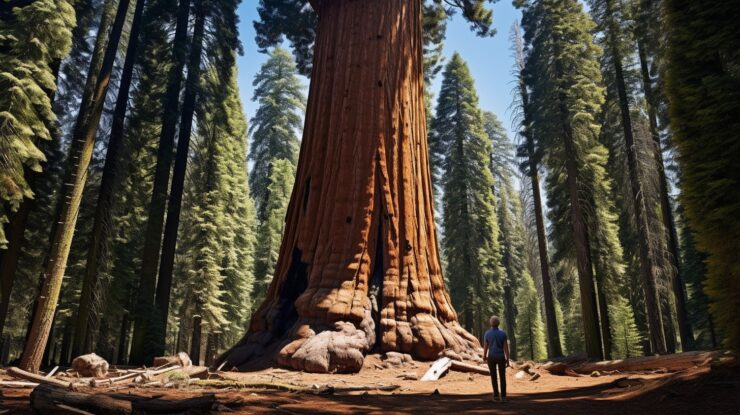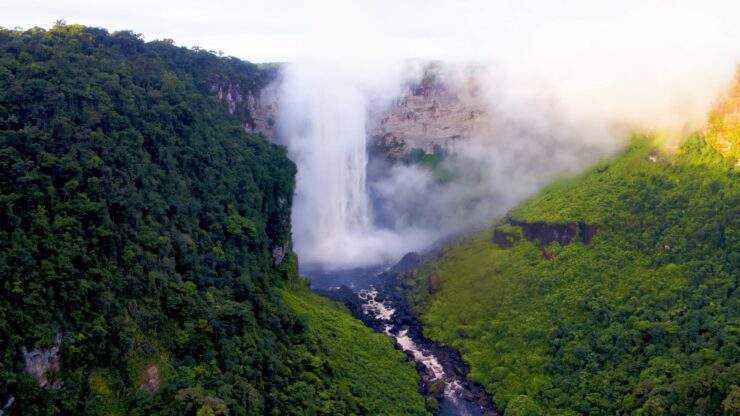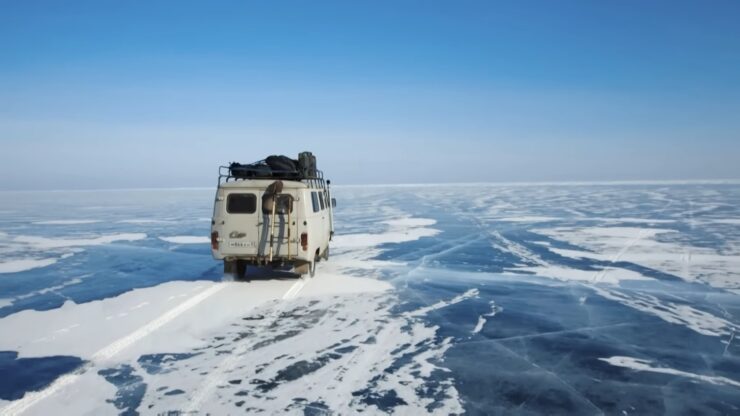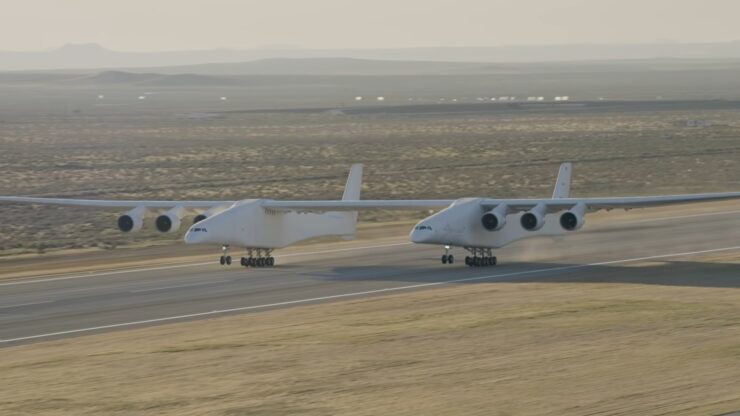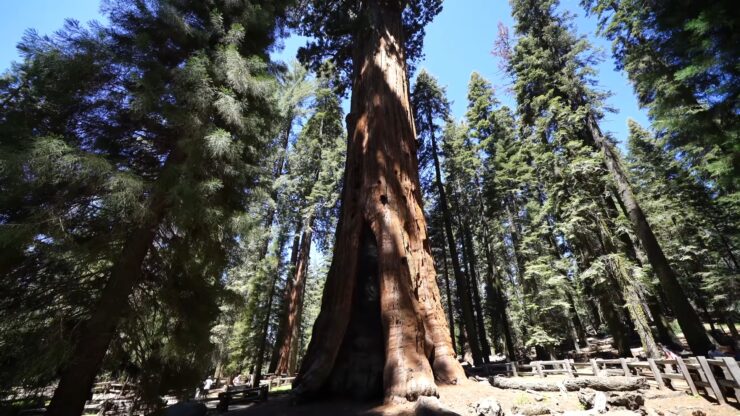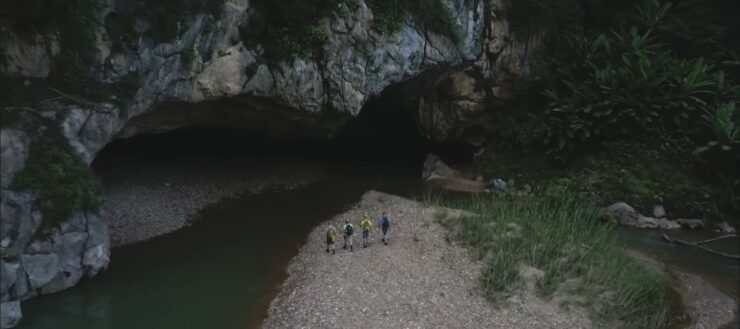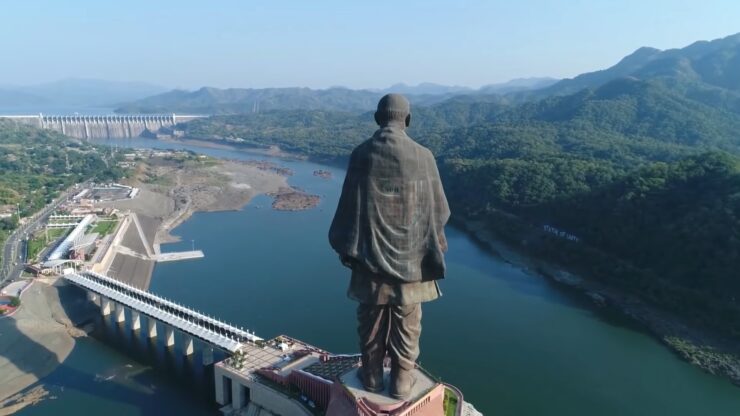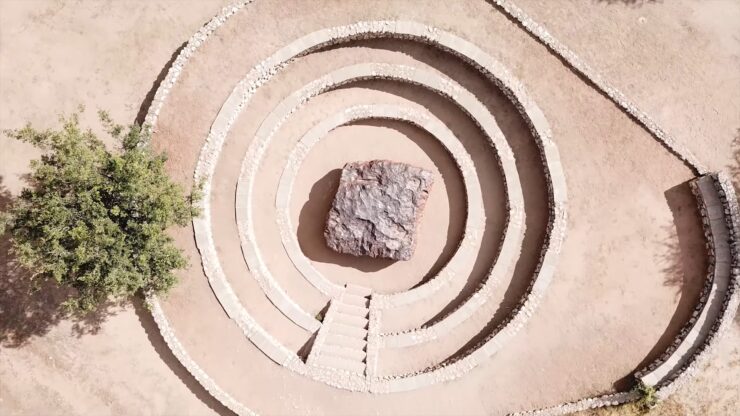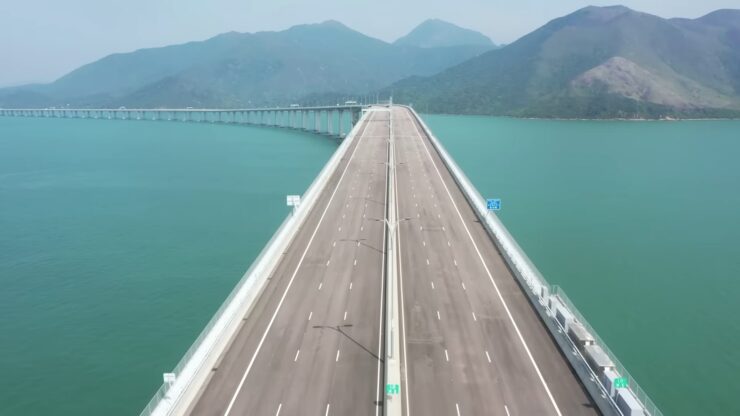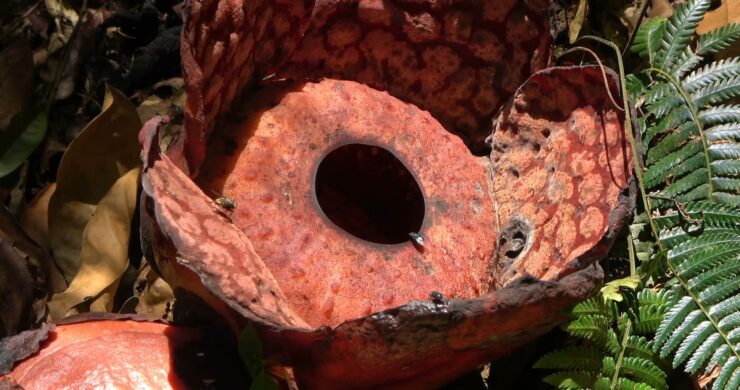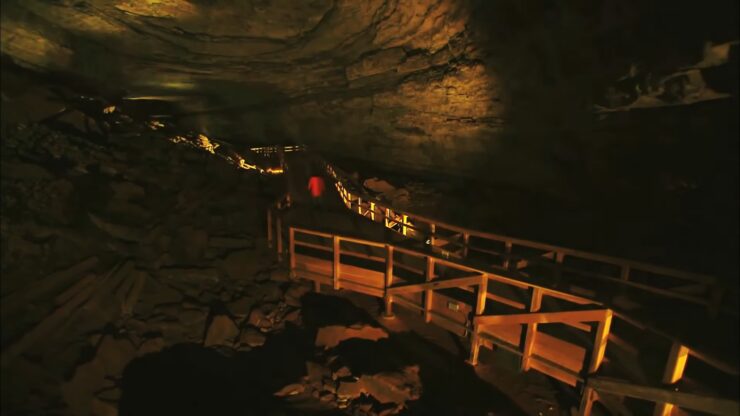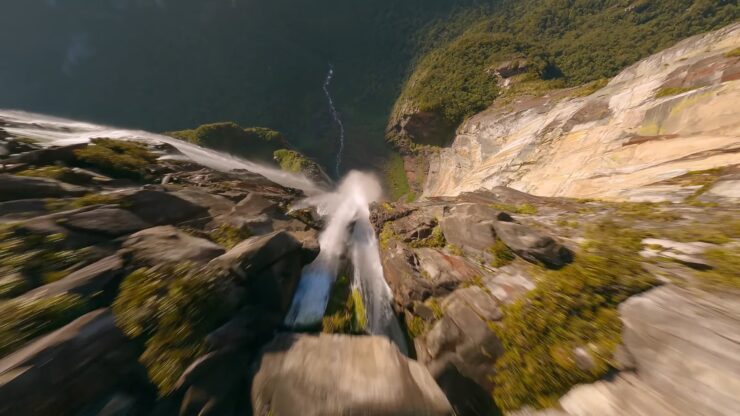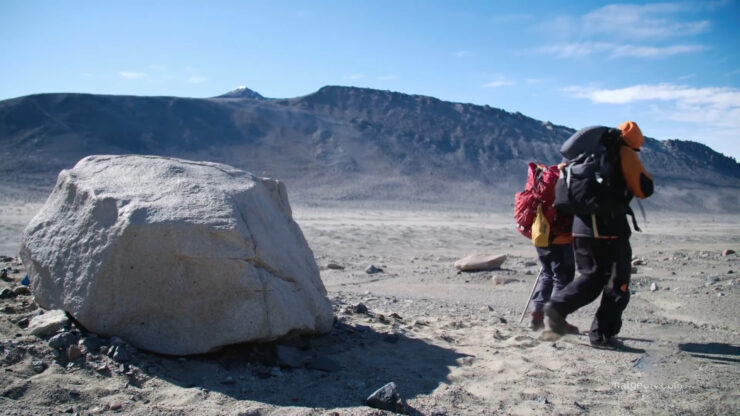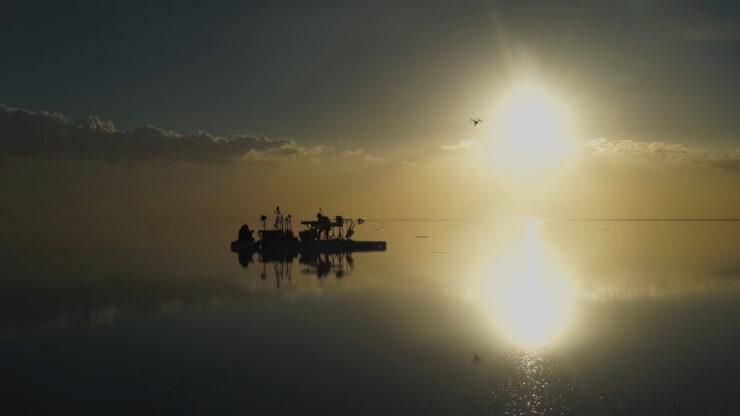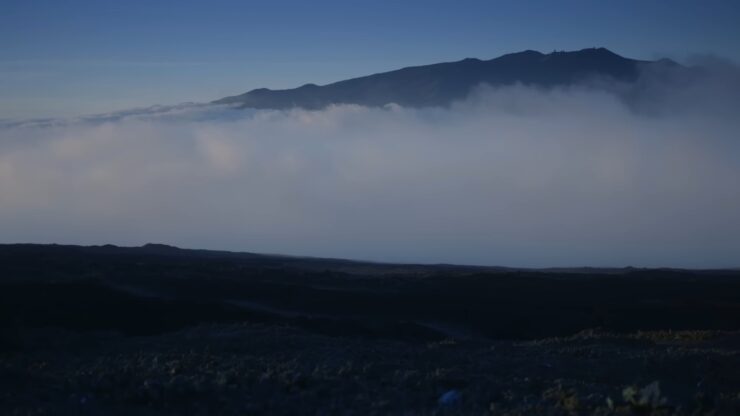The world, in its vastness and magnificence, never ceases to amaze me. From the very first time I gazed upon the vast expanse of the ocean as a child, to the time I stood dwarfed beneath the towering skyscrapers of New York City, I’ve always been enthralled by the sheer scale of things. Both nature and human ingenuity have carved wonders that defy imagination.
From creatures that roam our lands and seas, to structures that seem to touch the sky, our planet is a treasure trove of giants.
I’ve been fortunate to witness some of these marvels firsthand, and through my journeys, both physical and those taken from the comfort of my reading nook, I’ve compiled stories, insights, and awe-inspiring facts about some of the largest things our world has to offer.
So, whether you’re a curious soul like me or someone who enjoys a good tale of exploration and discovery, come with me on this journey through the world of colossal wonders. Let’s explore the grandeur together!
Largest Things In the Globe
27. The Largest Crater: Vredefort Crater
- South Africa
Craters are Earth’s scars, remnants of cosmic events from eons past. The Vredefort Crater in South Africa, formed over 2 billion years ago, is the world’s largest verified impact crater with a diameter of about 300 kilometers.
I’ve always been intrigued by the stories that our planet’s landscapes tell, and the Vredefort Crater is a testament to the dynamic nature of the cosmos. Today, it’s a UNESCO World Heritage Site, not just for its geological significance but also for its rich biodiversity and cultural importance.
26. Island: Greenland
Islands are often associated with tropical paradises, but the world’s largest island, Greenland, is more ice than beach. Covering an area of over 2.16 million square kilometers, it’s a realm of glaciers, fjords, and the mesmerizing Northern Lights.
While I’ve yet to set foot on Greenland, its raw, untouched beauty is something I’ve always admired from afar. Despite its icy facade, Greenland boasts a rich tapestry of Inuit culture, history, and a unique ecosystem that’s adapted to its harsh conditions.
25. The Largest Diamond: The Cullinan Diamond
- South Africa
Diamonds have always been symbols of luxury, beauty, and enduring strength. The Cullinan Diamond, discovered in South Africa in 1905, is the largest gem-quality rough diamond ever found, weighing an astonishing 3,106 carats.
I’ve always been fascinated by gemstones, and the story of the Cullinan Diamond is particularly captivating. It was eventually cut into several polished gems, the largest of which is the “Great Star of Africa.” Today, it’s set in the head of the Sovereign’s Sceptre with Cross, part of the British Crown Jewels.
24. The Largest Temple: Angkor Wat
- Cambodia
Temples are places of worship, reflection, and architectural beauty. Angkor Wat in Cambodia, originally built as a Hindu temple and later transformed into a Buddhist temple, is the largest religious monument in the world. Spanning over 402 acres, its intricate carvings and majestic towers are a testament to the Khmer Empire’s architectural prowess.
I remember the awe I felt when I first laid eyes on Angkor Wat during sunrise. The silhouette of the temple against the golden hues of the morning sky was a sight to cherish. The intricate carvings, depicting various mythological stories, speak volumes of the rich cultural heritage of the region.
23. Rainforest: The Amazon Rainforest
- South America
The Amazon Rainforest, often referred to as the “lungs of the Earth,” is the world’s largest tropical rainforest, covering an area of approximately 5.5 million square kilometers. It spans across nine countries in South America and is home to an incredibly diverse range of wildlife and plant species.
Having trekked through a part of the Amazon, the experience is nothing short of magical. The dense canopy, the symphony of sounds from various creatures, and the vibrant biodiversity make it a haven for nature lovers. It’s a vital ecosystem that plays a crucial role in the Earth’s climate regulation.
In Amazon rainforest, you can find the fifth biggest and widest waterfall in the world.
22. Freshwater Lake: Lake Baikal
- Siberia, Russia
Nestled in the heart of Siberia, Lake Baikal is not only the world’s deepest lake but also the largest by volume, holding about 20% of the Earth’s unfrozen freshwater. With a depth of 5,387 feet and an age of over 25 million years, it’s also one of the oldest lakes in the world.
I’ve always been drawn to serene water bodies, and Lake Baikal is on my list of places to visit. Its crystal-clear waters, surrounded by majestic mountains and dense forests, offer a tranquil retreat. The lake is also home to unique species, like the Baikal seal, which can’t be found anywhere else in the world.
21. Animal: Blue Whale
The ocean, with its vastness, hides many wonders, and the Blue Whale is one of its most majestic inhabitants. As the largest animal ever known to have existed, adult Blue Whales can reach lengths of up to 100 feet and weigh as much as 200 tons.
I recall a boat trip where I had the privilege of witnessing these gentle giants. Their sheer size, coupled with their graceful movements, was a sight to behold. Their deep, resonant calls, which can travel for miles underwater, serve as a reminder of the ocean’s depth and mystery.
20. The Largest Building: Boeing Factory
- Everett, Washington
The Boeing Factory in Everett, Washington, is a testament to human engineering. With a staggering size of 472 million cubic feet, it’s often considered the largest building in the world. I remember the first time I visited this facility; the sheer magnitude of the place left me speechless.
Planes, as we know, require a lot of space. And this facility, spanning approximately 100 acres, has no shortage of it. Housing a museum, theatre, 19 eateries, and a store, the complex is a marvel. The 2.33 miles of pedestrian tunnels beneath the manufacturing floor and its own railway spur add to its grandeur. It’s not just a factory; it’s a symbol of human ambition.
19. The Largest Football Stadium: Rungrado May
- North Korea
Football, or soccer as it’s known in some parts, is a sport that unites millions. And what better place to experience the thrill of a match than in the world’s largest football stadium? The Rungrado May Stadium in North Korea, completed in 1989, can hold an astonishing 114,000 spectators.
I’ve never been to North Korea, but from what I’ve read and seen in documentaries, this stadium is a sight to behold. It’s not just its size that’s impressive; the architecture and design are equally captivating. While the official capacity is often touted to be around 150,000, experts believe 114,000 is a more realistic number.
18. The Biggest Plane: The Stratolaunch
- Stratolaunch Systems Corporation
The sky has always fascinated me. And when it comes to aircraft, bigger often means better. The Stratolaunch, designed by the rocket-launching company Stratolaunch Systems Corporation, is a testament to this. Weighing 500,000 pounds, this aircraft is designed to soar at 35,000 feet, just like most passenger flights.
But what sets the Stratolaunch apart is its wingspan. At 385 feet, it’s longer than a football field! With six engines and twenty-eight wheels, this aircraft is designed to transport rockets carrying satellites into the Earth’s upper atmosphere. I remember reading about its successful test flight in 2019 and thinking, “This is the future of space exploration.”
17. The Largest Tree: General Sherman
- Sequoia National Park, California
Trees have always held a special place in my heart. Their towering presence and centuries-old stories are a testament to nature’s grandeur. Among these giants, the General Sherman stands out. Located in the Sequoia National Park in California, this tree is not just tall but voluminous.
Standing at a majestic 275 feet and spanning over 36 feet in width, General Sherman is the largest living tree by volume. I remember my visit to this park, standing at the base of this tree, feeling utterly dwarfed. It’s not just its size but the age – imagine a living being that has witnessed centuries pass by!
16. The World’s Tallest Mountain: Mount Everest, Himalayas
- Asia
The accolade of the highest point on Earth undeniably goes to Mount Everest. When measured from base to peak, Everest stands unmatched in its elevation above sea level, a soaring 8,848 meters. This Himalayan titan stands on the border of Nepal and Tibet, its icy facade contrasting the rich, earthy culture of the regions it straddles.
Diving into the specifics, Everest’s peak pierces the jet stream, sometimes subjecting it to ferocious winds and unimaginably cold temperatures. What makes this mountain even more captivating is the countless tales of bravery, ambition, and resilience that have unfolded on its slopes. I’ve explored many a lofty peak, but the allure of Everest, with its challenge and rich history, beckons me like no other.
15. The World’s Biggest Cave: Son Doong
- Vietnam
Caves are nature’s mysterious chambers, holding secrets from ages past. Son Doong Cave in Vietnam is one such wonder, but with an added record – it’s the world’s largest cave. The first time I saw pictures of this cave, I was mesmerized. The vast chambers, underground jungles, and colossal stalagmites are a sight to behold.
With a size of over 40 million cubic meters and some sections reaching 500 meters in height, Son Doong is a natural wonder. It’s so vast that it could easily accommodate multiple skyscrapers! Discovered in 1990, it’s a relatively recent addition to the world’s known wonders, but its majesty is timeless.
14. The World’s Greatest Statue: Statue of Unity
- India
Monuments often stand as symbols of pride, history, and cultural significance. The Statue of Unity in India is not just a monument but a colossal tribute to the Indian political leader and independence campaigner, Sardar Vallabhbhai Patel. Towering at 182 meters, it’s four times the size of the Statue of Liberty!
I’ve always been intrigued by the stories behind statues, and the Statue of Unity is no exception. It’s not just about its size but the message it conveys – unity in diversity, a principle that India holds dear. Standing before it, one can’t help but feel a sense of pride and admiration for the visionaries who dreamt big.
13. The Largest Flying Animal: Quetzalcoatlus Northropi
- Prehistoric Skies
The world of prehistoric creatures fascinates many, and among them, the Quetzalcoatlus Northropi stands out. With a wingspan of 40 feet, this pterosaur is the largest flying animal that ever graced our skies. Imagine a creature so vast that it dwarfs modern-day birds and even some aircraft!
While I’ve never witnessed this giant (for obvious reasons), the mere thought of such a creature soaring through ancient skies is awe-inspiring. Recent research suggests that to achieve flight, this behemoth would leap eight feet into the air, powered by its strong legs. Nature, in its prime, showcased wonders we can only dream of today.
12. The World’s Biggest Meteorite: Hoba
- Namibia
Space has always been a source of wonder and mystery. Occasionally, remnants from space find their way to our planet, and the Hoba meteorite is one such celestial giant. Discovered in Grootfontein, Namibia, this meteorite is the largest of its kind, weighing a staggering 66 tons.
I’ve always been captivated by stories of space rocks, and Hoba’s tale is intriguing. Despite its massive size, it left no noticeable crater, possibly due to its unique flat shape. Touching its surface, one can’t help but feel connected to the vast cosmos, a reminder of the universe’s grand scale and mysteries.
11. The World’s Longest Bridge: Danyang-Kunshan Grand Bridge
- China
Bridges are marvels of engineering, connecting lands and making distances shorter. The Danyang-Kunshan Grand Bridge in China is not just another bridge; it’s the world’s longest. Spanning over 100 miles, this architectural wonder is a testament to human ingenuity and perseverance.
I’ve traveled across many bridges, but the sheer length of the Danyang-Kunshan is mind-boggling. Built over four years by approximately 10,000 workers, this bridge is a part of the Beijing-Shanghai High-Speed Railway. It’s not just its length that’s impressive; the bridge is designed to withstand earthquakes, typhoons, and even direct hits from naval vessels. A true marvel of modern engineering.
10. The Largest Flower: Rafflesia Arnoldii
- Southeast Asia
Nature often surprises us with its creations, and the Rafflesia Arnoldii is one such wonder. Found in the rainforests of Southeast Asia, this flower, often referred to as the “Monster Flower,” can grow up to three feet in diameter. But there’s a twist – it emits a smell reminiscent of rotting meat!
While I’ve never had the chance to witness this flower in person, its reputation precedes it. The unique odor it emits is a strategy to attract flies for pollination. Nature, in its wisdom, has crafted this flower to ensure its survival, even if it means being a little less pleasant to our noses.
9. Living Organism: Posidonia Australis Seagrass
- Shark Bay, Australia
When we think of large organisms, our minds often go to whales or giant trees. However, the title of the largest living organism based on area goes to the Posidonia Australis Seagrass in Shark Bay, Australia. This vast meadow, originating from a single seed, covers approximately 200 square kilometers.
I’ve always been fascinated by the underwater world, and the Posidonia Australis is a testament to the wonders that lie beneath the waves. This seagrass is not just vast; it’s ancient, with estimates suggesting it’s around 4,500 years old. Swimming above this meadow, one can’t help but feel a connection to the ancient world and the timeless beauty of nature.
8. Cave System: Mammoth Cave
- Kentucky, USA
Caves are nature’s hidden chambers, each holding secrets waiting to be discovered. While Son Doong might be the largest single cave, when it comes to extensive cave systems, Mammoth Cave in Kentucky, USA, takes the crown. With over 400 miles of surveyed passageways, it’s the world’s longest known cave system.
I’ve always been drawn to the mysteries of the underground, and Mammoth Cave is a spelunker’s dream. Its vast chambers, intricate passageways, and rich history make it a must-visit. The thought of wandering through a labyrinth that has been forming for millions of years is both humbling and exhilarating.
7. The Tallest Waterfall: Angel Falls
- Venezuela
Waterfalls have a mesmerizing quality, their cascading waters narrating tales of time and nature’s power. Angel Falls in Venezuela is not just another waterfall; it’s the world’s tallest uninterrupted waterfall with a height of 979 meters and a plunge of 807 meters.
I remember the first time I saw Angel Falls, albeit in pictures. The sheer drop, set against the backdrop of the Auyán-tepui mountain, was breathtaking. It’s said that the falls are named after Jimmy Angel, a US aviator, whose plane crashed nearby in 1933. Nature’s wonders often come with tales of human adventure, and Angel Falls is no exception.
6. The Biggest Desert: Antarctic Desert
- Antarctica
When we think of deserts, scorching sands and relentless sun often come to mind. However, deserts are defined by their low precipitation levels, and in this category, the Antarctic Desert reigns supreme. Covering an area of 5.5 million square miles, it’s the largest desert on Earth.
My fascination with Antarctica goes beyond its icy landscapes. The Antarctic Desert, with its extreme conditions and unique ecosystem, is a testament to nature’s adaptability. Despite the harsh environment, life persists, from hardy microorganisms to the majestic Emperor penguins. It’s a reminder that life, in its myriad forms, finds a way.
5. The Largest Salt Flat: Salar de Uyuni
- Bolivia
Salt flats are nature’s mirrors, reflecting the sky in a surreal display of beauty. Salar de Uyuni in Bolivia is the world’s largest salt flat, spanning over 10,582 square kilometers. It’s a vast expanse of white salt, rock formations, and cacti-studded islands.
My journey to Salar de Uyuni was nothing short of magical. During the rainy season, it transforms into a giant mirror, reflecting the sky so perfectly that the horizon seems to disappear. It’s a place where the earth meets the sky, blurring the lines between reality and fantasy.
4. The Largest Ocean: Pacific Ocean
Oceans cover over 70% of our planet’s surface, and among them, the Pacific Ocean stands out as the largest. It’s more significant than all of the Earth’s land area combined, spanning from the Arctic Ocean to the Southern Ocean.
I’ve sailed across various parts of the Pacific, and its vastness is humbling. From the vibrant coral reefs of Australia to the serene islands of Polynesia, the Pacific is a treasure trove of biodiversity and cultures. Its depths hide mysteries we’ve yet to uncover, reminding us of the vast unknown that awaits exploration.
3. The Biggest Canyon: Grand Canyon
- Arizona, USA
Canyons are nature’s artwork, carved over millennia by the relentless force of water. The Grand Canyon in Arizona, USA, is a testament to this natural sculpting process. Stretching over 277 miles in length and over a mile deep, it’s a sight that leaves visitors in awe.
I remember standing at the edge of the Grand Canyon, feeling both insignificant and profoundly connected to the Earth. The layers of red rock tell a story that spans millions of years, and the Colorado River, which flows at its base, is a testament to the power of nature. It’s a place that evokes contemplation and wonder.
2. The Largest Volcano: Mauna Loa
- Hawaii
Volcanoes are nature’s way of reshaping the Earth, and Mauna Loa in Hawaii stands as the world’s largest active volcano, tallest then Mount Everest. Covering an area of around 2,035 square miles and rising 13,678 feet above sea level, its vastness is evident both above and below the ocean’s surface.
During my visit to Hawaii, the sheer size of Mauna Loa was overwhelming. Its last eruption in 1984 serves as a reminder of the Earth’s ever-changing nature. The landscapes around Mauna Loa, shaped by lava flows and tropical flora, offer a unique blend of beauty and raw power.
1. The Largest Glacier: Lambert Glacier
- Antarctica
Glaciers are nature’s slow-moving rivers of ice, and Lambert Glacier in Antarctica is the world’s largest and fastest-flowing glacier. Stretching over 60 miles in width and more than 250 miles in length, it drains a significant portion of East Antarctica.
While I’ve never set foot on Antarctica, the tales of explorers and the images captured by satellites paint a picture of a vast, icy expanse. Lambert Glacier, with its intricate patterns and colossal size, is a testament to the frozen beauty of our planet’s southernmost continent.
FAQ
Are there other notable large buildings apart from the Boeing Factory?
Yes, there are several other massive buildings around the world, such as the Aerium in Germany and the Jean-Luc Lagardère Plant in France. Each has its own unique features and purposes, ranging from aircraft assembly to indoor tropical resorts.
How do researchers measure the size of ancient creatures like the Quetzalcoatlus Northropi?
Researchers often rely on fossil evidence, comparing bone structures and sizes to modern-day animals. Advanced imaging techniques and 3D modeling can also help in estimating the size and appearance of these ancient creatures.
Are there other large salt flats besides Salar de Uyuni?
Absolutely! While Salar de Uyuni is the largest, there are other significant salt flats like the Bonneville Salt Flats in the USA and the Salinas Grandes in Argentina. Each has its own unique characteristics and ecological importance.
How does the Pacific Ocean compare in size to other oceans?
The Pacific Ocean is the largest, followed by the Atlantic, Indian, Southern, and Arctic Oceans. It’s so vast that it’s larger than all of the Earth’s landmass combined!
Are there other large caves besides Son Doong and Mammoth Cave?
Yes, the world is home to many vast cave systems. Some notable mentions include the Jeita Grotto in Lebanon and the Clearwater Cave System in Malaysia. Each cave offers unique formations and ecosystems.
How do scientists determine the age of natural formations like Lake Baikal or the Posidonia Australis Seagrass?
Scientists use various dating methods, such as radiometric dating and carbon dating, to estimate the age of natural formations. They also study sediment layers, fossil records, and other geological evidence to piece together the history of these wonders.
Final Words
Our world is a marvel, a blend of nature’s wonders and human ingenuity. From the vastness of the oceans to the intricacies of the smallest gem, each entity tells a story of time, evolution, and the relentless spirit of exploration.
As we journey through these colossal wonders, it’s essential to remember that while size and scale can be awe-inspiring, it’s the stories, the history, and the connections that truly resonate. Let’s continue to explore, learn, and marvel at the world around us, always cherishing the beauty and lessons it offers.

